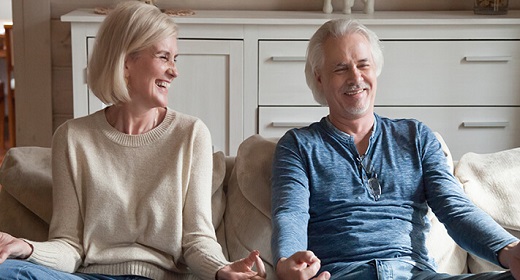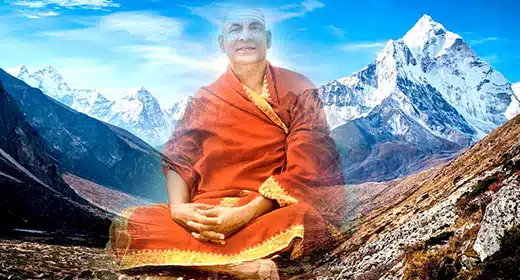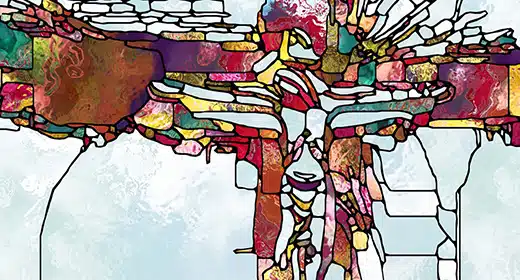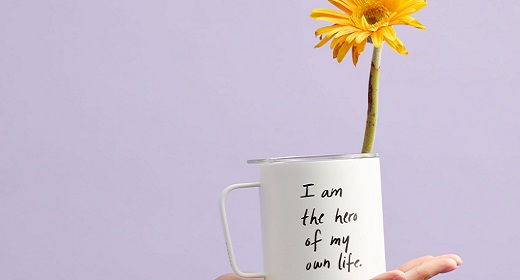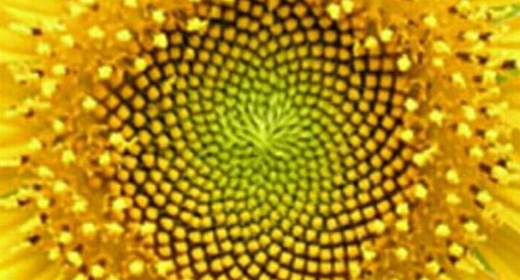This lecture is reprinted from the August and September 2001 Berkeley Zen Center Newsletter.
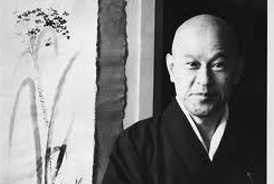 Dogen Zenji said, “Don’t practice your way as if you were a blind man trying to figure out what an elephant is.” The real elephant is not a plank, a rope, a fan, or a wall. A blind man feeling an elephant may think an elephant is like a wall, or rope, or plank, but the real elephant is not any of those.
Dogen Zenji said, “Don’t practice your way as if you were a blind man trying to figure out what an elephant is.” The real elephant is not a plank, a rope, a fan, or a wall. A blind man feeling an elephant may think an elephant is like a wall, or rope, or plank, but the real elephant is not any of those.
He also says, “Don’t be curious about the true dragon, like Seko.” In China there was a man named Seko, who loved dragons. All his scrolls were dragons, he designed his house like a dragon-house, and he had many pictures of dragons. So the real dragon thought, “If I appear in his house, he will be very pleased.” So one day the real dragon appeared in his room and Seko was very scared of it. He almost drew his sword and kill the real dragon. The dragon cried, “Oh my!” and hurriedly escaped from Seko’s room. Dogen Zenji says, “Don’t be like that.”
Most of us are practicing our way like the blind man or like Seko. That is why we have to start our practice over and over. You think you are practicing real zazen, but it may not be so. So if you notice you haven’t been practicing true zazen, you have to start practicing true zazen again. We have to begin our zazen over and over, because we are always liable to practice zazen like a blind man or like Seko.
There is another story, which was told by Nangaku (Nan Yueh). Rinzai belongs to Nangaku’s branch. People say there is Rinzai Zen and Soto Zen, but Dogen Zenji always talked about Nangaku’s famous story about polishing a tile. You know that story. When Baso was practicing zazen, Nangaku, who was passing by, asked him, “What are you doing?”
“I am practicing zazen,” Baso answered.
“Why do you practice zazen?” Nangaku then asked.
“I want to attain Buddhahood.”
Nangaku did not say anything, but he picked up a tile and started to polish it. Now Baso started wondering what Nangaku was doing and asked him, “What are you doing?”
“I am making a tile into a jewel,” Nangaku answered.” When a cart does not go, which do you whip, the cart or the horse?”
Dogen Zenji says that usually one would not hit the cart when the cart doesn’t go. One would hit the ox instead of the cart. But in our way, there should be a way to whip the cart when it doesn’t go. Usually when you practice zazen, almost all of you know you should whip the ox. And to whip the ox, you practice zazen. You’re giving your practice the whip pretty hard without knowing how to whip the cart. That is actually what you are doing. That is the usual way. But we should know that there is another way of practice: whipping the cart instead of the ox. This is something, which as a Soto priest, it is necessary to know. Maybe the best way is to whip the cart instead of the ox.
To whip an ox is like understanding the ox as a symbol of mind, as in the ten ox-herding pictures. The cart means the body, and it also means the zazen form, the formal practice of zazen. So the ox means spiritual attainment, and the cart means physical practice. Usually we understand zazen and shikan-taza as formal practice, and koan practice as spiritual or more mental practice. But with this kind of understanding, both practices are not complete. This kind of understanding is the understanding of the blind man or Seko. True practice is neither formal practice, nor so-called shikan-taza, nor koan practice. It is none of these. Those practices are just whipping the ox. The true practice is true shikan-taza, not shikan-taza as opposed to koan practice.
Most of those who talk about shikan-taza understand it as the Soto way and koan practice as the Rinzai way. This is like Seko loving dragons. These ideas of Soto and Rinzai are carved dragons not the real one. Each one of us practices zazen in our own way, with our own understanding, and we continue that kind of practice, thinking that this is right practice. So even though we are sitting in the zendo, we may be involved in our own practice. In other words, carefully carving our own dragon, which is not the real one. This is what most people are doing.
Some people may explain what zazen is philosophically, and some people may try to express it in literature, or painting, or in a scientific way, without knowing that they are creating their own dragon rather than seeing the real one. That is not wrong; that is all right. But we should know that there is a true dragon that has no form or color, which is called emptiness, and which includes koan practice, so called shikan-taza, various Hinayana ways of practice, as well as pre-Buddhistic practice. This is the practice transmitted from Buddha to us.
You come and practice zazen in this zendo where there should be the true dragon. But the instant you think, “This is the true dragon,” that is a mistake. Knowing that, if you come to this zendo, you should practice zazen with other people, forgetting all about your carving or painting. You should practice zazen with your friends, completely involved in the atmosphere we have here. Sometimes I allow people to stick to their old way. But strictly speaking, those who come and practice zazen here should be completely involved in the feeling we have in this zendo, and practice our way with other people, according to my instructions. That is what you should do.
But people who do not know what real emptiness is, what the true dragon is, may think, “He is forcing his way on us.” Or think, “Sokoji is a Soto Zen temple. But I have been practicing the Rinzai way.” But that is not true. We are practicing our way as transmitted from Buddha to us. We are one of Buddha’s disciples, and we practice zazen with Buddha, and with those who handed the practice down to us.
If you read books by scholars, you will find various opinions about Zen literature, or Zen thought, or what Bodhidharma’s way is, or whether Bodhidharma was a historical person or not, or what shikan-taza is, or what koan practice is. But most — I don’t say all – but most of the teachers and scholars are talking about their own dragons. It is easy to analyze or to compare one dragon with another, because they are carved, they are in some form already. So you can say this is a Soto dragon or this is a Rinzai dragon. But the Soto way is not so easy to figure out. “Looks like Rinzai, looks like Soto. Maybe it’s Soto.” In this way, they write books about Zen, but what they say is not true. A dragon is very difficult to figure out. “What is it? Is this a dragon or a snake? Looks like a snake. No good!” some scholar may say, but true zazen sometimes looks like a snake instead of a dragon. So you cannot say if true zazen is a great dragon or a miniature dragon. It is not possible to figure it out. If it is possible, if it always takes the same form, it is not the true dragon.
For people who cannot be satisfied with some form or color, the true dragon is an imaginary animal which does not exist. For them something which does not take some particular form or color is not a true being. But for Buddhists, reality can be understood in two ways: with form and color, and without form and color. That, according to Nangaku, is whipping the cart instead of the ox. If someone whips a cart, people may say he is crazy. But there is actually a transmitted way to whip the cart. To practice in a formal way, Rinzai, Soto, or at Zen Center, is to whip the cart.
There is a phrase, ichigyo zammai, which means “one pure practice.” It is usually understood as “to be completely involved in some kind or practice.” This is correct, but at the same time that we are deeply involved in a kind of practice, we should have complete freedom from it. Do you understand?
When you become very much attached to something, you have no freedom from it. But because of complete freedom, it is possible for us to be involved in, or attached to something completely. That is shikan-taza, true shikan-taza. So shikan-taza is not even a matter of whether you practice zazen or not. Even if you do not practice our way in a cross-legged position, if you have this point, you are actually always practicing zazen.
Dogen Zenji said, “Sickness does not destroy a person, but if he does not practice zazen, that no-practice will destroy a person.” Do you understand? You may say, “Today I cannot practice zazen because I have a headache. If I practice zazen I shall die.” But Dogen Zenji said, “Sickness does not destroy a person, but no practice will destroy him.”
Actually when Dogen Zenji was very sick, he left Eiheiji and went to Kyoto and stayed in his disciple’s home. We should know what he meant by “practice” when he said, “If you don’t practice zazen, it will destroy you.” It is not easy to talk about this point, what real practice is, because if we want to figure out what Dogen Zenji meant without having this kind of experience, talking about this point may be completely wrong. But we can figure out what he meant when we study the Shobogenzo. His way is something beyond formal practice, spiritual practice, or even enlightenment. The more you try to figure it out, the more you feel distant from your practice and from Dogen’s practice. And yet, it is a practice which we cannot escape. Actually we are practicing this way day by day, but for us, there is no time to figure out completely what Dogen meant. Even though we human beings may continue this way forever, we will not be able to say, “This is his way.” The only thing we can say is, “This is the way which has no end and no beginning. And from this way we cannot escape.”
Actually, all the various beings survive in this way, and everything is going in this way, including we human beings. So there is no problem for us. But as human beings who live this way in this world, the constant effort to keep up the way the whole universe is going, and to practice our way, is necessary as long as this universe exists. With this feeling, with this complete calmness of our mind, we should practice our way. Most students who have sat for one year actually have this quality of practice. But when you try to figure out what your practice is, you have a problem, or you create problems which do not belong to your practice. If you just sit, there is no problem for most students. Sometimes you create problems, and you fight with problems, that’s all. You are creating them, actually. In your zazen there is no problem.
When you practice your own personal practice, you have problems. When you just sit, being absorbed in the feeling we have in our zendo, there is no problem at all. We should make our effort in this way more of the time, instead of carving our own dragons. That is how you have complete freedom from everything, including yourself. To talk about freedom is quite easy, but to actually have it is not so easy at all. Unless you are able to have freedom from yourself, you will never have freedom from everything. Or, if you only have freedom from yourself, you will have complete freedom from everything.
How we attain this freedom is our practice. You may not listen to the various instructions in detail. The instructions will help you, of course, but only when you are ready to practice zazen according to the way of the place where you practice, forgetting all about your old way of practicing. I am not emphasizing the Soto way instead of the Rinzai way. But as long as you practice at Zen Center, you should practice Zen Center’s way, or else you will be involved in personal practice. You will always be carving your own dragon, thinking, “This is the true dragon.” That is a silly mistake. You shouldn’t create this kind of problem for your practice.
As some Zen masters say, our way is like walking, step by step. This is our practice. When you stand on one leg, you should forget the other leg. This step by step is true practice. If you stick to the right leg or left leg, the left foot or right foot, you cannot walk. This is how we practice our way. This is complete freedom.
Thank you very much.

